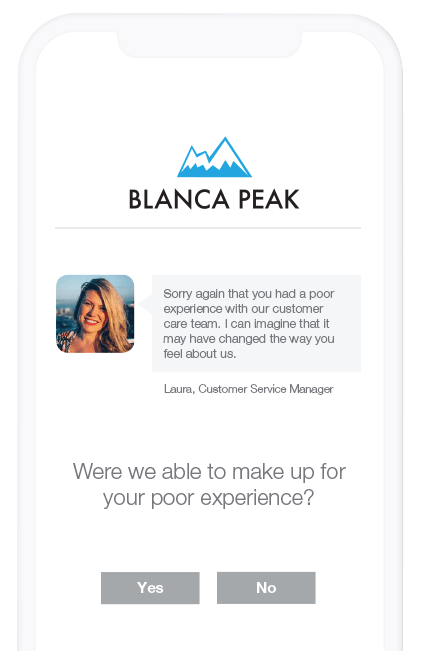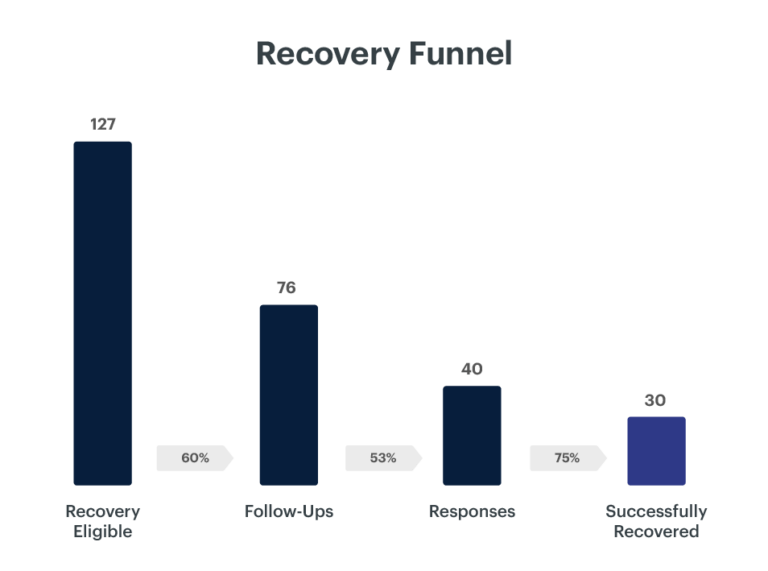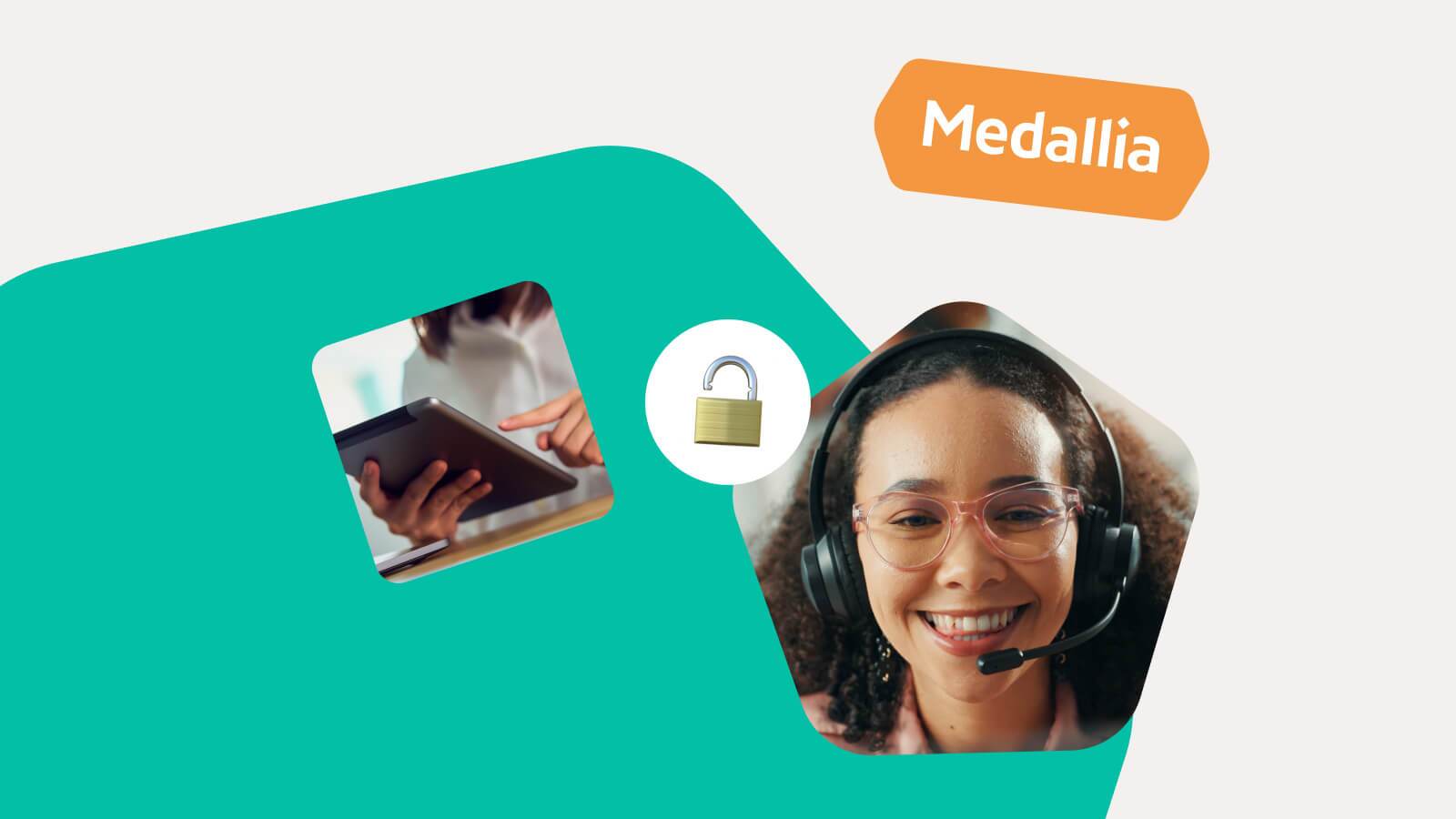Service Recovery: How to Win Customers Back After a Negative Experience
March 2, 2022
Contact Center
Customers know what they want and need, so the inability to provide service that meets expectations delivers a significant blow to the business. It takes just one poor service interaction to make a broader impact, after all.
Once a customer shares their experience with social media and reviews sites, your business can’t sit still. You might think losing just one customer doesn’t result in much damage, but the truth is that negative experiences shared in any public forum hurt your brand and cause potential customers to think twice before choosing you. As a result, the competition earns both the customers you disappointed and those influenced by their negative experiences.
Service recovery needs to be a must-have component in your customer experience (CX) strategy. It affords you the opportunities to identify issues, achieve resolutions, and ultimately retain customers after missing the mark the first time.
In the report Customer Service Trends for 2022: Preparing for the Future of Customer Service, consumers made it clear that they’re less patient and more vocal than ever. 40% of consumers in the United States and the United Kingdom say they will share a negative experience online; therefore, fall short of delivering quality service and it’s virtually guaranteed to influence others quickly.
Even the most successful customer service teams in the world fall short of customers’ expectations every so often. Yet they’re able to make things right with service recovery that’s proactive, engaging, and customer-centric start to finish.
Here’s what you need to know about service recovery and how to strategically leverage a service recovery program to successfully win back customers.
What is Service Recovery?
Service recovery is the process of communicating with customers who faced a negative experience during a service reaction in order to rectify the situation.
CX leaders often refer to service recovery as the ‘secret weapon’ — while customer service teams should always aim to provide stellar service, things don’t always go as planned and service recovery steps in.
Not only does it drive customer retention, but service recovery also aids customer acquisition as well as brand loyalty and awareness. Make things right after they initially went wrong, and customers will share positive experiences online for the world to see. In turn, your brand establishes a reputation for putting the customer first.
As with other components of a CX strategy, service recovery proves the impact of a customer service team on the entire organization.
Why You Need Service Recovery
Businesses like yours have a huge opportunity to recover a relationship, strengthen the bond, and drive future sales when a customer is unhappy with an experience. But, while service recovery exists already for many companies, leadership may fail to realize its full potential. If this occurs, service recovery can’t be nearly as effective as it needs to be.
Service recovery is traditionally handled in one of two ways. Either a dedicated service recovery team parachutes in when a service interaction is escalated or after agents on a customer service team file reports on their own.
In the first case, calls are only flagged for service recovery when the customer asks to speak to a manager. Few dissatisfied customers actually ask for a superior, though. Customers will simply move on to another brand and never do business with you again. In the second case, agents on the front line are responsible for flagging unhappy customers and delivering information for the service recovery team to take action.
Both methods described above are typically unreliable and even unenforceable.
Alerting the appropriate person for service recovery within 10-15 minutes of a negative experience is critical because, if service recovery doesn’t happen quickly, the value you would have extracted — by saving the sale or the relationship — evaporates. When you act in the moment, the interaction is still fresh in the customer’s mind and it shows that rectifying the situation is a priority to your brand.
How to Implement Service Recovery for Customer Service
What can you do to maximize and effectively seize the win-back opportunities in front of you? It all comes down to how you collect customer feedback, how you use the data obtained, and how quickly you act on the insights uncovered.
Real-time customer feedback collected immediately after a service interaction pinpoints the specific reason for a customer’s dissatisfaction. Tagging and alerts help sort tickets categorically and notify customer service team members instantly, making targeted recovery seamless.
Use the following four steps to implement a service recovery program with measurable business impact:
#1. Flag negative feedback automatically
Configure alerts to automatically notify leaders any time a customer leaves negative feedback. Alerts should create a new ticket in your CRM platform prompting the appropriate team members to have access to the information they need to assess the situation. Whoever will communicate with the customer needs to know who the customer is, why they reached out, and what they feel went wrong during the service interaction.
To keep up, it’s critical to analyze customer feedback at scale.
#2. Follow up with the customer
Once the appropriate team members are notified, ensure you have a plan in place to follow up with the unhappy customer. There are many ways to triage negative customer feedback, so work with your leadership team to understand what you’re willing to offer in order to turn an experience around.
Customers appreciate discounts and refunds the most, but determine what’s within reason based on the situation presented. You may need to settle by offering a sincere apology, which still means a lot.
Just the effort made to follow up and acknowledge the customer didn’t get what they needed out of a service interaction will indicate your brand cares. It’ll motivate the customer to give your brand another chance.
#3. Request a feedback update

Made things right and closed the ticket? You’re not done yet. Share a request with the customer to submit follow-up feedback, which will allow you to measure changes in customer sentiment.
#4. Measure the impact over time
Every negative interaction is a risk of losing a customer and their extended network, so the success of your service recovery program is a valuable metric to highlight the ROI of the customer service team itself.
Did they stay or did they go? If customers continue to walk away from your brand despite its best efforts, it’s worth reexamining the service recovery program.

You’d like to achieve a success rate that manages to retain more customers from win-back opportunities than those lost.
The Impact of Service Recovery
Leading brands are perfecting the art of service recovery — resulting in reduced costs, increased effectiveness, and significant business value.
Service recovery develops a halo effect of positivity around your brand. It’ll become known for delighting customers with swift action that aims to make things right no matter what happened the first time.
Ready to ignite agent performance? Check out Medallia’s guide, 4 Steps to Supercharge Contact Center Agent Performance, to learn how leading contact centers are putting the right systems and processes in place to achieve success.








